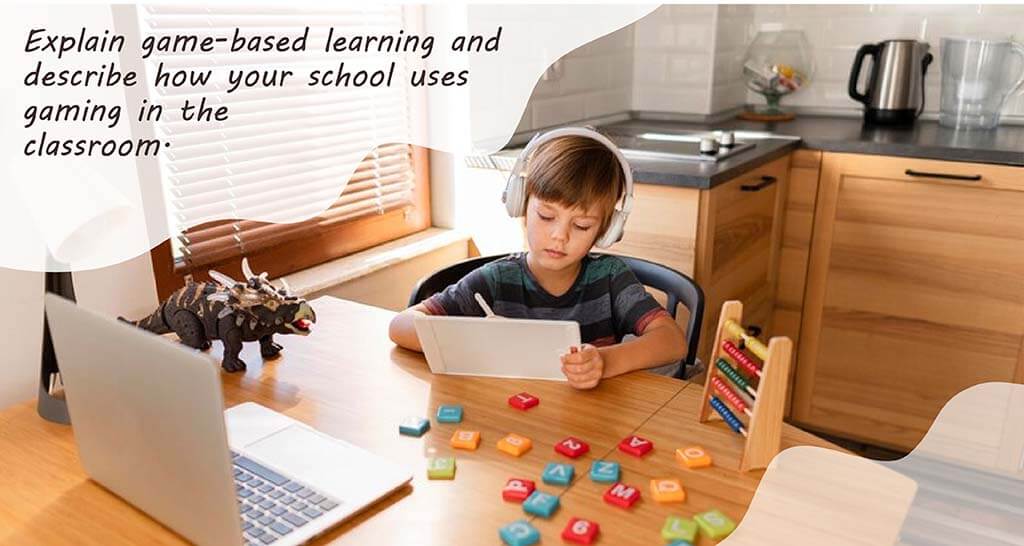Educational institutions all around the globe are starting to utilize gamification in classrooms to increase student engagement and digital fluency. Here’s all you need to know about game-based learning and how it may benefit your child’s education. Learn more about game-based learning and how it may be used in your school!
This blog is about the advantages of game-based learning in the classroom, how it works, and what your school can do right now to incorporate more gaming into the classroom.
What is Game-Based Learning?
It is an educational technique that engages students, improves material knowledge, and teaches new skills by using digital games. Game base learning breaks down complicated concepts into various levels of comprehension by allowing students to explore themes via interactive challenges.
GBL is immersive and participatory learning that employs video games as a platform to educate and involve students in a subject. GBL may be utilized in formal and casual contexts and is sometimes meant to supplement the traditional curriculum.
How can a student find out whether a game is being played?
Interacting with the game allows students to gain skills and information. They also enhance their communication skills by discussing the game goals with others. Working together teaches them social skills such as cooperation, leadership, and problem-solving. This will eventually result in the advancement and improvement of global citizens.
Advantages of Game-Based Learning
The advantages of game-based learning are widely known; studies have shown that students who learn using video games have better problem-solving abilities, working memory, and cognitive control. Game-based learning is an educational technique that engages students, improves material knowledge, and teaches new skills by using digital games. Game-based learning breaks down complicated concepts into various levels of comprehension by allowing students to explore themes via interactive challenges.
Teachers construct a task or challenge for students to fulfill while employing game-based learning. The learner may experiment with different ways and approaches to solving the issue, learning how ideas function via experience rather than rote memorization. Game-based education allows students of all levels to succeed by breaking complicated concepts into numerous knowledge groups.
One advantage of this type of learning is that it forces the learner to make decisions. This teaches kids how to think critically, which is helpful in various occupations. It also dramatically enhances their thinking abilities by forcing them to solve issues through trial and error rather than just memorizing material like they would in a traditional classroom environment.
How can your school include more gaming in the classroom?
The value of game-based learning is indisputable, which is why many institutions are already incorporating gaming into the classroom. However, how will your school get started? Here are a few ideas to get you started:
- Experiment with various games.
- Learn about the many forms of games.
- Investigate the use of game-based learning in other schools.
- Register with an online game developer (like Stencyl)
- Choose a game engine (such as Unity)
GBL may be used in a variety of ways in the classroom. One critical initial step is choosing a particular subject for students to study via a game-based learning experience. The next stage would be to establish an exciting relationship.
There are several advantages to incorporating game-based learning into your classroom. For one thing, it’s a fun method to learn. It also teaches pupils to think critically while having fun. The following are some instances of game-based learning:
1) Goo’s World
2) Zombies vs. Plants
3) Travel
4) The game Minecraft
Conclusion
There are numerous positive aspects of incorporating gaming into the classroom. It is an excellent method for getting pupils motivated and interested in learning, and it can be used to teach various topics. In addition, regardless of the children’s learning demands, the technology is approachable and exciting for them all. You may bring gaming into your school’s classroom by developing a curriculum tailored to your student’s skills and interests and then searching for games that align with the curriculum’s goals. In addition, you can utilize tools such as SmartLab’s Game Based Learning Platform to design and develop individualized video games to instruct students in areas such as mathematics and science. Students are more likely to be engaged and interested in learning when they are allowed to play educational games in the classroom. You may increase the amount of gaming done in your school’s classroom by developing a curriculum tailored to your student’s skills and interests and then searching for a game aligned with this curriculum. In addition, you can utilize tools such as SmartLab’s Game Based Learning Platform to design and develop individualized video games to instruct students in areas such as mathematics and science.










